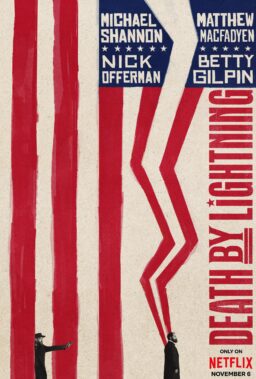TELLURIDE, Colo.–Some sort of symbolic divide was crossed here Friday, on the opening night of the 28th Telluride Film Festival, when the Telluride Medal was presented to Colin Collender, head of HBO Films.
Making the presentation, Telluride co-director Tom Luddy observed that much of the best work in American film these days is being produced on cable television. It is the simple truth.
Collender oversaw the production of Mike Nichols’ “Wit,” an HBO film earlier this year with an Emma Thompson performance that would be leading the Oscar sweeps, if it had opened in theaters. To Telluride he brought Agnieszka Holland’s “Shot in the Heart,” based on a book written by the brother of Gary (“The Executioner’s Song”) Gilmore.
Focusing on the last week of the two-time killer’s life, the movie stars Giovanni Ribisi as his quiet, tortured younger brother, and Elias Koteas as Gilmore. It takes place mostly in the form of death row conversations and flashbacks to the tortured childhoods of all the Gilmore brothers (Sam Shepard and Amy Madigan play their parents). The movie is too dark and perhaps too ambitious for theatrical release; cable guarantees it an audience, and it is worth noting that “The Executioner’s Song,” with its brilliant early Tommy Lee Jones performance, was also made for cable.
Telluride is a celebration of film, period–not just new theatrical films, but made-for-cable, classics, restorations, revivals, student films, whatever seems first rate. The guest programmer’s name is always kept a secret, this year with better reason than usual, because it is Salman Rushdie, the novelist put under death sentence by the Iranian fundamentalists for his writings. He is here with a sampling of Indian films (including Satyajit Ray’s little-known children’s film “The Golden Fortress”) and another sampling of science fiction (including the silent “Metropolis” with live music by the Alloy Orchestra, and Andrei Tarkovsky’s science-fiction epic “Solaris”).
The three Telluride Tributes this year are to Catherine Breillat, the French director who uses explicit sex in her work; Om Puri, the legendary Indian actor now becoming well known in the west with films like “My Son the Fanatic“; and the British director Ken Russell, who made a torrent of passionate and sometimes overwrought films in the 1960s through the 1980s (“Women in Love,” “The Devils,” “The Music Lovers“) and now claims he is reduced to making home movies on video.
When I first came to Telluride in 1980 the festival was shoehorned into four tiny venues–the jewel box Opera House, the little Nugget theater on Main Street, the Mason’s Hall, and the Quonset hut Community Center–plus of course the free outdoor screenings. Since then the Community Center has disappeared, the high school gymnasium has been converted into the vast Max theater (with the little Minnie nearby), the 800-seat Chuck Jones Cinema appeared in the Mountain Village at the top of the ski lift, and this year the grade school gym has become the 600-seat Galaxy, with eye-popping graphics that cross Copernicus with Jules Verne.
These temporary cinemas, which are state of the art, are put up and taken down in a week; festival goers race from one to another, trying to juggle impossible schedules. On Saturday night, for example, did you want to go to the Om Puri tribute with the premiere of his new film “Mystic Masseur,” or to Harold Lloyd’s silent classic “Speedy” with a live performance by the Alloy Orchestra, or the Cannes prize-winning Eskimo drama “The Fast Runner,” or the new Dogma movie “Italian For Beginners,” or the twisted cop drama “Lantana,” with Anthony LaPaglia? Choose one of the above. (I chose “Speedy” because I knew I would never again be able to see it in 35mm with a live orchestra.)
My festival began on Friday night with “The Cat's Meow,” Peter Bogdanovich’s best film of recent years, which is based on a persistent Hollywood legend that William Randolph Hearst shot and killed Hollywood executive Thomas Ince on his yacht, and had the incident hushed up. In Bogdanovich’s version, based on a script and play by Steven Peros, Hearst (Edward Herrmann) thought his mistress Marian Davies (Kirsten Dunst) was having an affair with Charlie Chaplin (Eddie Izzard), and shot Ince (Cary Elwes) thinking he was Chaplin. One juicy scene shows gossip columnist Louella Parsons (Jennifer Tilly) as a witness who gets a lifetime contract as the price for her silence, Bogdanovich says he first heard the story from Orson Welles; the Ince death has never been satisfactorily explained.
In between the movies, there’s brunch at a dude ranch, a feed on Main Street for all attendees, and the prospect of walking down Main Street and running into Faye Dunaway, Ken Burns, Milos Forman or Catherine Keener.
The town is also filled with a few hundred motorcycle club members, middle-aged, genial and despite their leathers extremely unlike Hells Angels. One told me they knew nothing about a film festival: “We bike up here for the mountain scenery and the burgers at the Floradora Saloon.”











